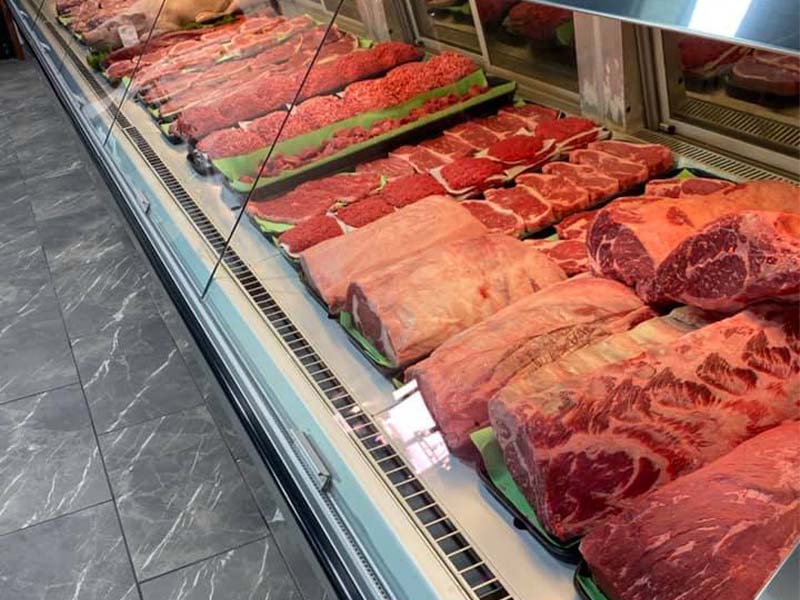Uncover the Art of the Butcher's Cut in a Modern Meat Market
In the ever-evolving landscape of modern meat markets, the butcher's cut has actually transcended its typical origins, combining age-old workmanship with contemporary techniques. Today's butchers are not simply processors of meat; they are well-informed craftsmens that emphasize sustainability and moral sourcing. Their proficiency in picking and preparing cuts customized to certain culinary needs uses an unmatched eating experience. What truly establishes the modern butcher apart is their capacity to create a deeper link between customers and the beginnings of their meat. How do these masters equilibrium custom with innovation, and what effects does this have for the future of meat usage?
Development of Butchery Strategies
The evolution of butchery methods reflects a rich tapestry of technology and adaptation driven by innovations in technology, adjustments in customer demand, and a much deeper understanding of meat scientific research. Historically, butchery was a craft passed down with generations, with approaches honed over centuries to optimize return and flavor. Nevertheless, the commercial revolution introduced mechanization, transforming standard techniques and enabling massive handling.
The mid-20th century saw butchery strategies even more fine-tuned by clinical insights right into muscular tissue biology and meat aging, enhancing both tenderness and preference. Innovations like vacuum packaging and refrigeration expanded item shelf-life, enabling butchers to branch out offerings and boost quality assurance. This period likewise marked the increase of customized tools, such as band saws and meat slicers, which increased precision and efficiency in meat processing.

Digital systems currently assist in monitoring pet provenance and maximizing cuts to fulfill particular client choices. In addition, a revival in artisanal butchery has actually emerged, mixing standard skills with modern-day knowledge to provide to consumers looking for ethical and lasting meat choices.
Understanding Meat Cuts
Comprehending the intricacies of meat cuts is crucial for both butchers and customers seeking high quality and worth. Each cut comes from a various part of the pet, presenting distinct tastes, structures, and food preparation approaches - bagley farms meat market edwardsville il. Proficiency of these differences not only improves culinary experiences but also makes best use of the energy of each carcass. For butchers, exact cuts show skill and regard for the craft, guaranteeing minimal waste and optimum return.

Recognizing muscular tissue structure is essential; muscles made use of extra regularly by the animal have a tendency to be tougher and are best matched for sluggish cooking methods, while less-used muscles, like those located in the loin, are much more tender and ideal for grilling or roasting. Knowledge with these differences encourages customers to make educated options, boosting their cooking ventures.
Selecting Top Quality Meat
Choosing the best meat includes even more than just choosing an aesthetically enticing piece from the screen. The art of picking quality meat calls for a discerning eye and understanding of specific qualities that indicate freshness and excellence.
Second of all, consider the marbling, which refers news to the white streaks of fat within the muscle. Appropriate marbling is a vital indicator of inflammation and taste, as it thaws during cooking, boosting the meat's juiciness. Remember, greater marbling usually correlates with premium high quality cuts, such as USDA Prime.
Appearance is an additional crucial aspect; meat must really feel firm to the touch, not slimy or extremely soft. Furthermore, be conscious of the scent. Fresh meat must have a tidy, neutral scent, devoid of any type of sour or repulsive odors.
Combining Cuts With Food Preparation Methods

On the other hand, tougher cuts like brisket and chuck roast are rich in collagen, which damages down into jelly when prepared slowly. These cuts are excellent for braising or sluggish roasting, permitting the meat to soften over time and establish deep, intricate tastes. Likewise, cuts such as short ribs and pork shoulder make out well with slow-cooking approaches, where prolonged cooking times change their durable appearances into succulent recipes.
Lamb shanks and oxtail, which call for long term food preparation to soften, are excellent prospects for cooking or sluggish simmering. These techniques coax out rich, hearty flavors while maintaining moisture. By understanding the distinct qualities of each cut, chefs and home cooks alike can boost their cooking productions, making certain each recipe is both pleasing and unforgettable.
The Butcher's Role Today
Browsing the progressing landscape of the modern meat market, the butcher's duty today prolongs beyond mere prep work of cuts. Contemporary butchers are culinary craftsmens, teachers, and supporters for lasting methods. They link the void between the ranch and the fork by making sure ethical sourcing, recognizing animal husbandry, and Get the facts prioritizing openness in the supply chain. This shift mirrors the growing customer demand for top quality over quantity, where provenance and pet welfare are extremely important.
Along with crafting precise cuts, butchers currently involve directly with customers, offering cooking recommendations and customizing choices to suit private needs and choices. Their competence in meat aging, marbling, and flavor accounts empowers consumers to make informed decisions, enhancing their cooking experiences. This customized solution exhibits the butcher's progressing role as a relied on advisor in the kitchen area.
Moreover, butchers are essential in decreasing waste, making use of whole pets to develop varied products such as sausages and supplies. This extensive strategy not only values the animal however additionally lines up with contemporary sustainability goals. This way, the modern butcher symbolizes both tradition and development, adapting to an ever-changing market while protecting the artistry and honesty article source of their craft.
Conclusion
The modern butcher's craft intricately weaves traditional strategies with modern-day developments, stressing sustainable methods and moral sourcing. Proficiency in understanding varied meat cuts and quality signs equips butchers to supply enlightened referrals, straightening details cuts with optimum food preparation approaches. This knowledge not just boosts culinary experiences however likewise enhances the connection between customers and the origins of their food. By recognizing historical techniques while welcoming modern needs, the butcher's role stays vital in today's innovative meat market (bagley farms meat market edwardsville il).